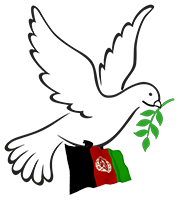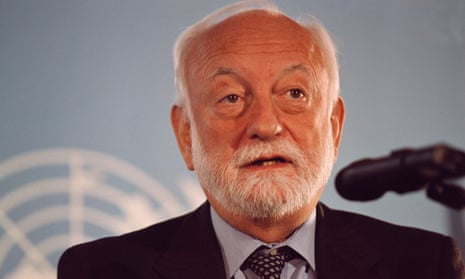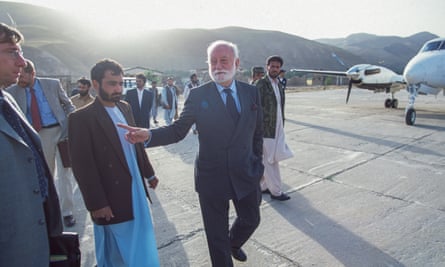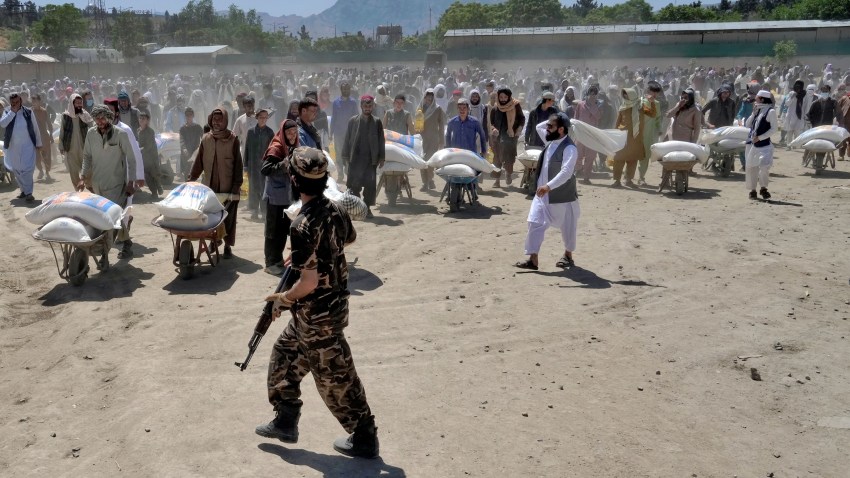United States Institute of Peace
Thursday, December 8, 2022
Erasing Women from Public Life
Examples of the Taliban’s repressive treatment of women abound. Days ago, three women were flogged in a football stadium in Logar province in front of thousands for what the Taliban called “moral crimes.” Similar floggings have been reported in Nuristan, Takhar, Kabul, Laghman and Bamyan provinces. In mid-October, a woman in Ghor province accused of a “moral crime” was scheduled to be stoned, but the night before the sentence was to be carried out, the woman was found dead. Activists speculate that she either committed suicide or was murdered by her family.
One of the few Afghan activists to publicly speak of her experience in Taliban detention for protesting for her rights told of the nightmare she went through — an experience that likely mirrors those of other Afghan women detained by the Taliban. “They tortured me … using cables, pipes and whips … As they were torturing me, they would record it. It was a terrifying experience in that prison,” Tamana Paryani said, months after her release and evacuation to Europe.
Women are being erased from public life, effectively imprisoned within their own society by recent decrees that ban women from public parks and gyms, require women’s faces to be covered in public, and limit the number of days they can go shopping (and then only with a male relative). “In no other country have women and girls so rapidly disappeared from all spheres of public life, nor are they as disadvantaged in every aspect of their lives,” wrote Special Rapporteur for Human Rights in Afghanistan Richard Bennett in his latest report on the situation in Afghanistan.
U.S. Special Envoy for Afghan Women, Girls and Human Rights Rina Amiri has repeatedly raised alarm about violence against women. “Those who fear a radicalized Afghanistan should be alarmed by the Taliban’s policies against women & girls, denying them education, work in most sectors, even small joys such as the right to go to a park. This extremism will lead to instability, poverty & more population flight,” she tweeted in November.
Afghan activists have consistently called on world leaders to address the dire situation women and girls are facing. “The women of Afghanistan went from existence — from being part of society, from working, from being part of every aspect of life as doctors, judges, nurses, engineers, women running offices — to nothing. Everything they had, even the most basic right to go to high school, was taken away from them,” said Mahbouba Seraj, a 74-year-old women’s rights activist.
After the Talban took over Afghanistan, there was much discussion about whether we would see a reformed Taliban movement that would be more inclusive and more respecting of women’s rights. But only two weeks after Kabul fell, they reinstated their 1990s ban on girls’ secondary education.
Can Pressure Change the Taliban’s Treatment of Women?
International opposition to and opprobrium of the Taliban’s anachronistic policies on women has been nearly universal, particularly in regard to education. A handful of leaders from around the Muslim world have also decried the Taliban’s aberrant interpretations of Shariah concerning girls’ education. This includes the Turkish foreign ministry, the Organization of Islamic Cooperation (OIC), and the Qatari and Indonesian foreign ministers.
Despite the condemnation and isolation from the international community, the Taliban have not changed their posture or policies toward women. Inducing them to do so will require a comprehensive pressure campaign, which could look like this:
- The international community should explicitly link recognition of the Taliban government to its policies and practices related to women, among other things. It is important to note that no country has recognized the Taliban as the legitimate governing authority in Afghanistan, which is worse than in the 1990s when they at least had recognition from Pakistan, Saudi Arabia and the UAE. But the lack of recognition today is largely tied to concerns over security and terrorism. Moving forward, all states should predicate recognition and normalization on the basic respect for women’s fundamental rights as well.
- Political leaders and scholars from around the Muslim world should proactively communicate to the Taliban and the Afghan people what their interpretation of women’s rights under Shariah looks like. For many Afghans and the Taliban, cultural messaging may be even more effective than diplomatic demarches. Demonstrating that women have greater rights in the rest of the Muslim world can help counter the Taliban’s claims that their version of Islam is the only true one. Indeed, Article 6 of OIC’s Cairo Declaration calls on states to “eliminate difficulties that impede … [women’s] full enjoyment of human rights and fundamental freedoms and effective participation in all spheres of life, at all levels.”
- Continue to support Special Rapporteur Bennet’s mission and enhance his investigative mandate. The mandate for the U.N. Special Rapporteur is renewable by the U.N. Human Rights Council on an annual basis. Not only should his term be renewed as long as the human rights situation in Afghanistan remains poor, but he should also be given greater investigative authorities and resources to comprehensively document Taliban policies and practices that violate international human rights agreements.
- Provide financial and moral support to Afghan civil society and women-led organizations who provides services to Afghan women. Afghan women’s rights groups in the country need donor support to survive as their access to employment is effectively cut off. Civil society and leaders of other nations — particularly in Afghanistan’s neighborhood who have friendly relations with the Taliban — should continue to express their support for Afghan women and their fight to reassert their rights. This could include joining campaigns, advocating on their behalf and providing safe spaces and platforms to voice their concerns. Afghan women have long called for their inclusion in decision making at local, national and international levels.
While the international community, particularly the Muslim world, has a vital role to play, the most important and strongest form of pressure will come from inside Afghanistan. Afghan women are their own best advocates but need the support described above. Many traditional male leaders in Afghanistan oppose the Taliban’s policies on women but are afraid to speak up. Giving them a platform on Afghan media and finding subtle ways to empower them in their own communities can help amplify local demands for women’s rights.
Perhaps the most influential sources of change will be from within the Taliban movement itself. Some leading Taliban figures and clerics — including powerful Taliban deputy leader and Interior Minister Sirajuddin Haqqani, Taliban co-founder Abdul Ghani Baradar, Minister of Higher Education Abdul Baqi Haqqani and the head of a seminary in Herat, Jalilullah Akhundzada — have called for the ban to be rescinded. The Taliban’s deputy foreign minister, Sher Abas Stanekzai, went so far as to publicly say, “Education is obligatory on both men and women, without any discrimination. None of the religious scholars present here can deny this obligation. No one can offer a justification based on [Islamic] Sharia for opposing [women’s right to education.”
Despite these Taliban leaders speaking up, the ban on education remains in place. These statements may just be lip service, or, perhaps, they offer an entry point for activists in Afghanistan and from the international community to convince the Taliban to reinstate Afghan women’s fundamental right to education. Either way, the steps detailed above to pressure the Taliban will be vital to persuading them to change their education policies.
Documenting Taliban Policies to Measure Success
No pressure campaign can work without ways to measure its effectiveness. This archive helps to demonstrate the deeply disturbing and concerning trend toward more restrictions on all aspects of women’s lives. Getting these restrictions lifted is the primary and widely held goal. The archive enables these policies to be tracked to see whether the Taliban are fulfilling their ostensible commitments toward a just and inclusive society — and can provide points for focused advocacy and debate.
 Afghanistan Peace Campaign
Afghanistan Peace Campaign


 Afghans queue outside a bank in Kabul. Photo: Hoshang Hashimi/AFP, 31 August 2021.Once a week at 11:30 at night, after dinner and the evening prayer, after the nightly buzz of my siblings playing around has given way to the steady breathing of sleep, my mother watches me with anxious eyes as I leave the house to go the bank.
Afghans queue outside a bank in Kabul. Photo: Hoshang Hashimi/AFP, 31 August 2021.Once a week at 11:30 at night, after dinner and the evening prayer, after the nightly buzz of my siblings playing around has given way to the steady breathing of sleep, my mother watches me with anxious eyes as I leave the house to go the bank.


